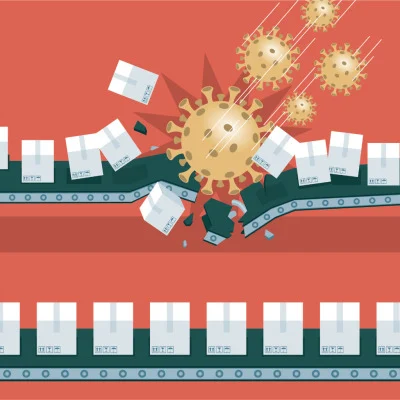The COVID-19 pandemic has seen major disruptions to supply chains around the world in all sectors, but especially in healthcare. Head of supply chain management at Mayo Clinic in Minnesota outlines the key factors for successful management of resources across a health system during the pandemic (Francis 2020).
You might also like:Planning Your Surge Capacity: Useful Tools
Uninterrupted provision of patient care since the beginning of the pandemic has been a challenge due to constantly changing circumstances. As a result, health institutions must now continuously reassess their short- and long-term strategies to address critical supply needs. Timeliness is the most important factor, so it is necessary to monitor events around the globe to address potential third-party risks and improve a supply chain’s agility and resilience. This approach is reflected in business continuity plans inherent to advanced healthcare providers.
By the end of January it became clear that the situation in China could lead to disruptions in the Mayo’s supply chains. To address this risk, the health system enabled its hospital incident command system (HICS) with an emergency operations centre and a sourcing command centre. There were daily personal protective equipment (PPE) inventories and, since the supply system was already overwhelmed, non-traditional sources of PPE, such as participation in group purchasing organisations (GPOs) or switching to local manufacturers, were adopted. A business continuity planning routine and the availability of the demand-based inventory management technology, among others, helped Mayo to adapt quickly to the fast-changing environment.
Francis reflects on the “lessons learned and applied” and outlines the following implications for supply chain management during the pandemic.
- Up-to-date business continuity plans help to evaluate potential risks of disruption. An organisation should know the geography of its main suppliers and constantly monitor situation there. The plans together with clearly assigned responsibilities are key for timely adjustments in the supply management strategy.
- Agile and innovative culture means that when necessary, the staff is capable of adjusting to new responsibilities and developing new skills as well as identifing new prospective strategies to address a critical situation.
- Robust communication practices are instrumental when updating various audiences, from staff to visitors, on recent developments, such as PPE protocols, schedule adjustments, lay-offs, etc. Here, strong cooperation between the parties involved (e.g. infection prevention and control, public affairs, physicians) is a major advantage.
- Proper PPE standards and protocols must be in place, based on the recommendations from international agencies, such as the World Health Organization, as well as national and local authorities. Involvement of safety, IPAC and nursing in these protocols’ implementation improves adherence.
- Increasing supply availability and capacity should be the focus for healthcare leaders in order to mitigate the risks. New partnerships, often non-conventional and/or requiring additional investment, may be formed, and cooperation with existing suppliers may be expanded.
- IT and analytics are the areas that are imperative for successful inventory management. They allow for more transparency along a supply chain and better allocation of resources. Investing in staff who can perform relevant analyses and modelling also increases operational efficiency.
- Sourcing strategies assessment may help to find the balance between international and domestic sources and weigh the risks associated with either. At Mayo, this assessment is supported by a product cross-reference database and retention of vendor evaluations.
- Inventory/distribution model of an organisation should be fully assessed and adjusted if necessary. This has become particularly important since the start of the pandemic, with organisations facing numerous challenges when distributing scarce resources within their networks. For Mayo, centralised management of supply inventory has proven to be the most efficient.
- Price and availability balance.Traditionally, healthcare organisations would seek the best value for money. Today, however, reliability of a supplier has become an important determinant in awarding a supplies contract, and it might be reasonable to pay a higher price for a reliable supply.
- Governmental/regulatory relationships should be nourished on an individual level as they may prove key when assistance is needed.In the U.S., it would include Department of Health and Human Services, Federal Emergency Management Agency, and so on.
In conclusion, Francis highlights the need to keep “the proper perspective on the essence of your work,” which should be supported by strategic action plans.
Image credit: sorbetto via iStock
References:
Francis JR (2020) COVID-19: Implications for Supply Chain Management. Frontiers of Health Services Management, 37(1):33-38.










